Weaver news
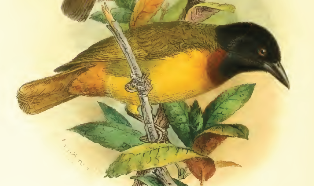
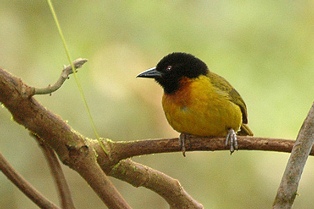
The Strange Weaver Ploceus alienus is common in montane forest along the Albertine Rift. The adult (photo above right, from wikipedia) has the head, neck and bib on the breast black, with a chestnut band below the bib. The female is similar but the black ends on the throat, and the breast is chestnut. Young birds are green above, yellow below, and with a golden brown wash on the chin and throat. The species was described in 1902 by Bowdler Sharpe as Sitagra aliena, where aliena means alien or strange. Sharpe considered it as strange because it did not clearly fit into any of the many weaver genera known at the time. The English name for this species was Alien Weaver for several decades before becoming Strange Weaver. It was first illustrated by Shelley in a book (1905, The birds of Africa, comprising all the species which occur in the Ethiopian Region. Vol. 4, Part 2) (above left).
The Strange Weaver feeds on insects and invertebrates, and also eats berries and some seeds. The Strange Weaver is solitary and monogamous, probably having a permanent pair bond.
Clutch size is 2. The eggs are creamy white with some grey shading, irregularly speckled with reddish-brown (figure right, from Ogilvie-Grant WR. 1910. Ruwenzori Expedition reports. Transactions of the Zoological Society 19:253-480). There are 3 PHOWN records (see PHOWN summary), from Rwanda and Uganda. Many more PHOWN records are needed for this common species. Old nests may be used for breeding by the White-collared Oliveback Nesocharis ansorgei, so look at old nests too. Submit any weaver nest records to PHOWN (PHOtos of Weaver Nests) via the Virtual Museum upload site. PHOWN summary Previous Wedn: White-billed Buffalo-Weaver Full weaver species list |








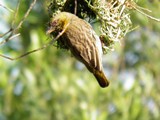


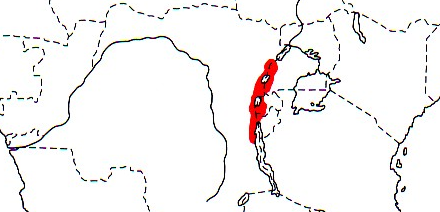 No subspecies of the Strange Weaver are recognised. It occurs in DR Congo, Uganda, Rwanda and Burundi (see map left, based on
No subspecies of the Strange Weaver are recognised. It occurs in DR Congo, Uganda, Rwanda and Burundi (see map left, based on 
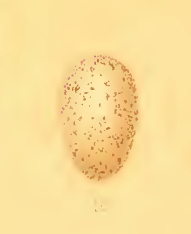 The nest (photo left, from
The nest (photo left, from